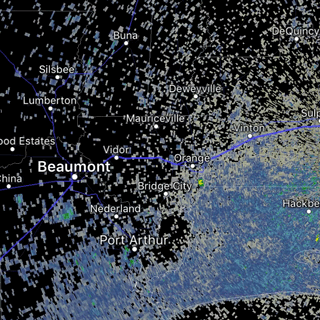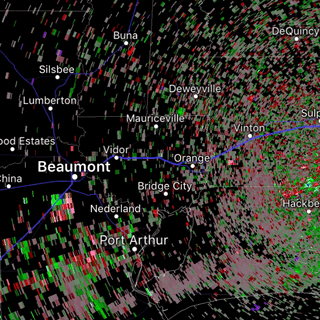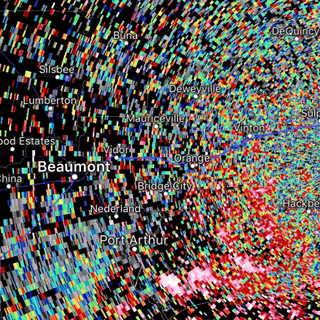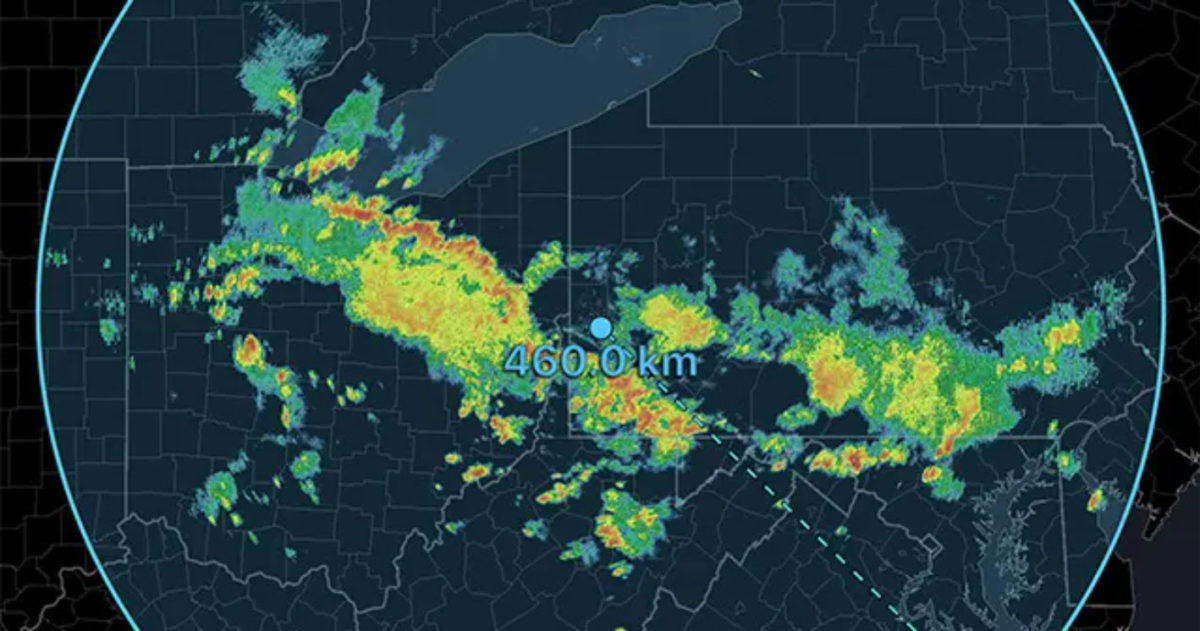During the morning hours right before sunrise, expanding rings can sometimes be seen on radar images. These are called Roosting Rings and are a result of birds in flight near the radar. Let’s take a look at what they look like on RadarScope.
As birds begin to migrate to the south, certain species tend to gather at known roosting sites. These areas are often detected by radar as the birds take flight in the morning. Their flight is indicated by rings on various radar products that eventually disappear once the birds fly above or below the radar beam. Below is an example of a roosting ring. High reflectivity values may indicate areas where birds are tightly clustered together.
 Roosting Ring Reflectivity
Roosting Ring Reflectivity
These rings are only seen during their morning flight and not their evening return due to atmospheric conditions that typically occur in the early hours of the day. On a calm night, a temperature inversion (in which temperature increases with height) develops near the surface. It causes the radar beam to refract downward, enabling echoes at lower levels to be detected. In the evening, these inversions typically are not present or are very weak, and as a result, these rings are not observed.
Other radar products can also be used to observe these roosting rings. In the example below, Super Resolution Velocity is shown. The left half of the circle (red shades) is moving westward away from the radar whereas the right half is moving eastward toward the radar (green shades). For perspective, the radar is located just to the east of the ring.
 Roosting Ring Velocity
Roosting Ring Velocity
Dual polarization data can also tell us information about the ring. One of the dual-polarimetric variables that we can use is known as Differential Reflectivity. It is related to the logarithm of the ratio of the power received from the horizontally polarized pulse to the power received from the vertically polarized pulse. If the Differential Reflectivity is positive then the object observed by the radar is horizontally oriented; if the Differential Reflectivity is negative, it is vertically oriented. With the ring discussed here, values are a mixture of both positive and negative, indicating various orientations.
 Roosting Ring Differential Reflectivity
Roosting Ring Differential Reflectivity
These images of a roosting ring are just one example of a nonmeteorological echo that can be observed by radar. Analyzing values of these products within this phenomena can provide even more insight into what the radar is seeing, including the orientation of the birds as well as the variety of sizes and shapes of the birds within these rings. Biologists have even been known to use the same radar we use to study weather echoes to study bird migration.
{{cta(‘7adc9887-5a2e-4a2c-90de-3d3a733f8912′,’justifycenter’)}}








